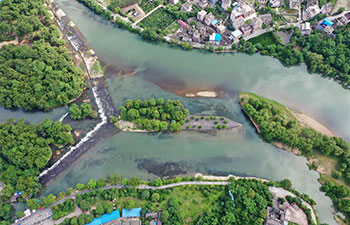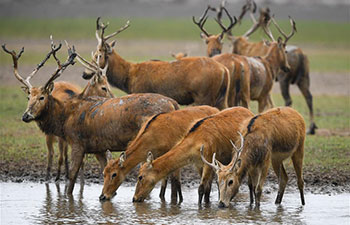SYDNEY, July 1 (Xinhua) -- The number of seabirds on Australia's southeast coast is falling according to a new 17-year study conducted by researchers from the Centre for Ecosystem Science at the University of New South Wales (UNSW).
In total, the team discovered a drop in 13 different species including "globally-threatened birds such as the enormous Wandering Albatross, as well as locally breeding Flesh-footed Shearwater," lead author Simon Gorta said on Monday.
"Seabirds are critically important organisms for maintaining the health of marine ecosystems. They act as apex predators, feeding on a range of prey such as plankton, squid, fish and carcasses across the world's oceans."
"Our findings are worrying, not just because thirteen of our more common species are declining, but because we don't know for sure what is driving these declines."
Compiling data collected by birdwatchers in the Southern Ocean Seabird Study Association between 2000 to 2016, UNSW scientists believe that warming ocean temperatures as a result of climate change are likely to be the main reason for the decreasing numbers.
"We can predict that as surface temperatures increase with climate change, we will be seeing fewer species that prefer cooler-than-average surface temperatures," Gorta said.
"The most dramatic example of this was in summer species -- Pomarine and Arctic Jaegers -- which showed this surface temperature preference and consistently declined in the region over the 17-year study period."
Outside of Australia, in other parts of the world the problem is also becoming a concern.
"Seabirds are the most threatened group of birds on the planet, with roughly 30 percent of them listed on the International Union for the Conservation of Nature Red List as at risk of extinction," co-author and Director of the Centre for Ecosystem Science, Professor Richard Kingsford explained.
"They are threatened where they forage at sea, and where they breed, from commercial fishing and pollution at sea, as well as habitat degradation and introduced predators such as rats at breeding sites."
With the team now calling for more to be done to determine the exact cause of the decline, Gorta said, "it is important that everyone, not just the researchers, know what is going on in our oceans, because we depend on them, yet they are degrading before our eyes."
"These issues must be addressed in order to halt the long-term declines of seabirds."












